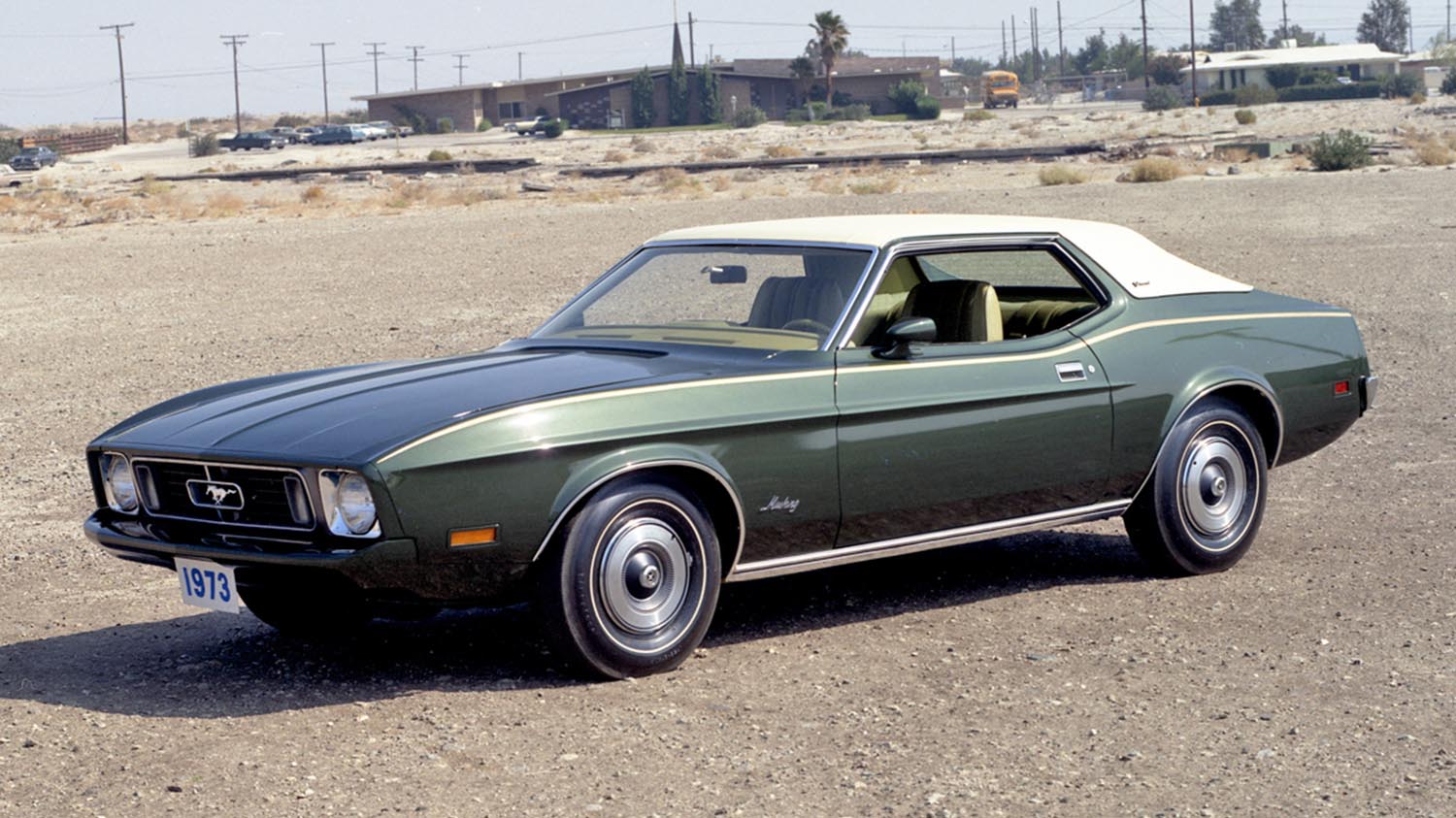
The first-generation Mustang ended not with a roar, but with a refined flourish of luxury. Serving as the final iteration of the larger Mustang body style, the 1973 Ford Mustang Grande coupe stands as a fascinating symbol of a changing era. Launched in 1969, the Grande trim provided a stark contrast to the aggressive, performance-focused Mach 1. Instead, it catered to buyers who sought comfort, elegance, and a quieter ride inside their pony car. This decision proved timely, as the industry shifted away from pure muscle towards personal luxury vehicles.
The Ascent of Personal Luxury
The Mustang was initially conceived as an affordable and sporty personal car. As the models grew larger and heavier, Ford recognized a new market appetite. Customers were willing to pay for increased sophistication and comfort features. Consequently, the Grande trim level matured into the premium choice for the hardtop coupe body. It essentially became Ford’s answer to the Brougham-style luxury trend that swept the American auto market during this period.
Interior Appointments and Exclusivity
Stepping inside the 1973 Ford Mustang Grande coupe immediately communicated luxury. The cabin featured deluxe, high-back bucket seats trimmed in premium materials like knitted vinyl or cloth. Furthermore, woodtone accents adorned the dashboard, instrument panel, and steering wheel. Extra sound-deadening insulation was strategically added throughout the body. Therefore, the coupe delivered a noticeably smoother and quieter driving experience compared to the standard models. Details like courtesy lights, bright pedal pads, and deluxe door panels completed the upscale look.
Styling Cues for the Final Year
The 1973 model year was tasked with complying with new federal safety mandates. Specifically, this requirement called for a five-mile-per-hour impact standard for the front bumper. Ford managed this challenge with a surprisingly clean design solution. This was one of the key differences from other cars of the time.
An Integrated Urethane Bumper
Instead of the massive chrome “park bench” bumpers seen on many rivals, the 1973 Ford Mustang Grande coupe received a color-keyed urethane front bumper. This material was integrated with the restyled honeycomb grille. The result was a surprisingly successful fusion of safety and aesthetics. On the Grande, the standard vinyl roof, available in colors like black or white, further emphasized its elegant, less-sporting character. Bright trim on the rocker panels and wheel arches added a necessary touch of flash to the exterior profile.
The End of an Era’s Size
The 1971–1973 Mustangs were the largest of the first generation. This substantial size increase was partially intended to accommodate Ford’s larger engines. By 1973, the Mustang measured 193.8 inches long. Consequently, the Grande coupe offered excellent road presence. The sheer size and mass meant that while it looked powerful, it handled differently from its smaller, original 1964 predecessor. Its comfortable ride was certainly appropriate for its luxury positioning.
Powertrain and Performance Options
The 1973 Ford Mustang Grande coupe offered a range of engine choices, allowing buyers to customize their balance of efficiency and power. The standard engine was the 250 cubic inch inline-six, which produced a net 95 horsepower. Many buyers upgraded to a V8 engine. The most popular choice was the 302 cubic inch V8, rated at a net 141 horsepower. However, the top-tier option was the 351 cubic inch Cleveland V8, with the potent Cobra Jet version delivering up to 259 horsepower (SAE Net). This variety meant the Grande could serve as either a comfortable cruiser or a discreetly powerful machine. The most common transmission was the three-speed SelectShift Cruise-O-Matic automatic. Power steering and power front disc brakes were frequently optioned to manage the car’s weight and improve drivability.
A Legacy of Refinement
The 1973 Mustang, and especially the Grande, represents the concluding chapter for the original pony car concept. Sales for the Grande actually increased in its final year. This success proved that Ford correctly anticipated the market shift towards comfort and sophistication. Ultimately, the 1973 Ford Mustang Grande coupe is remembered as the last of the big, plush Mustangs. It stands as a significant marker in the history of the nameplate, preceding the downsized Mustang II that debuted the following year.
Disclaimer: Content on this site is for informational purposes only. Vehicle specs, pricing, and availability may change. Always verify details with official sources before making decisions. Opinions are those of the authors.
Source: Ford Heritage Vault
